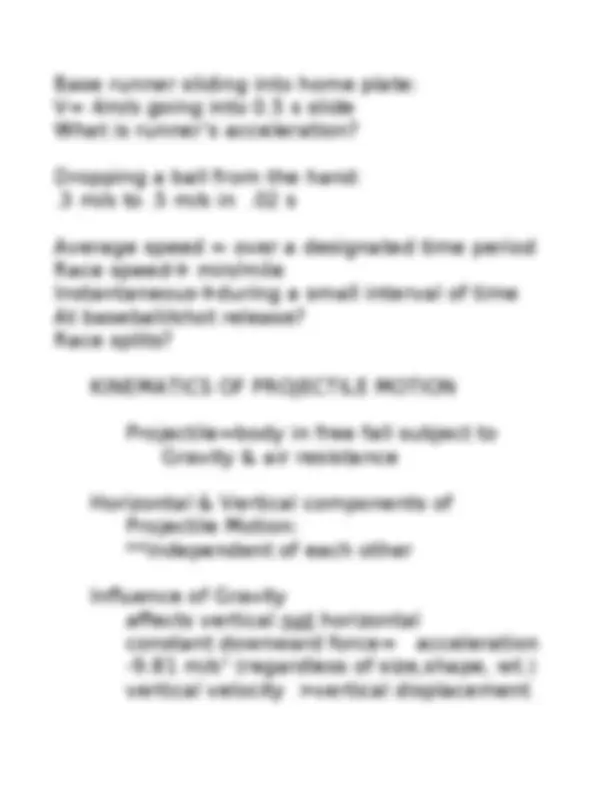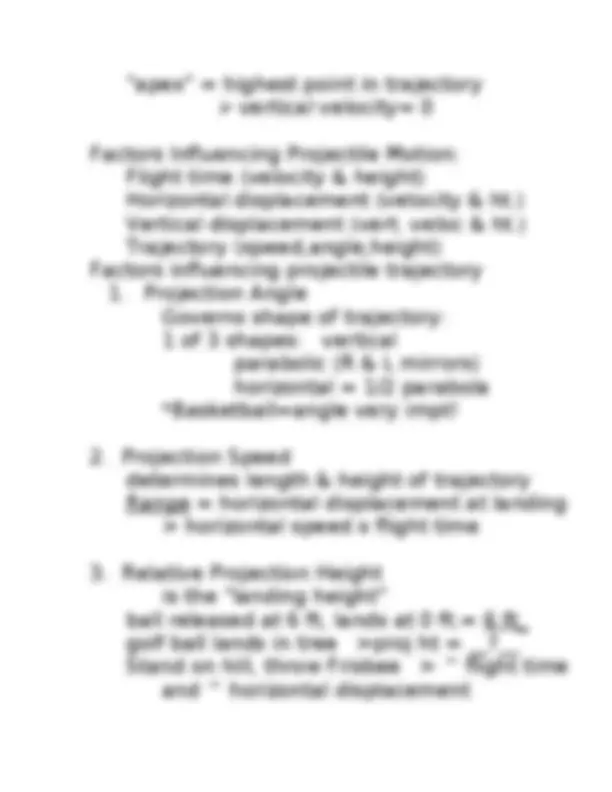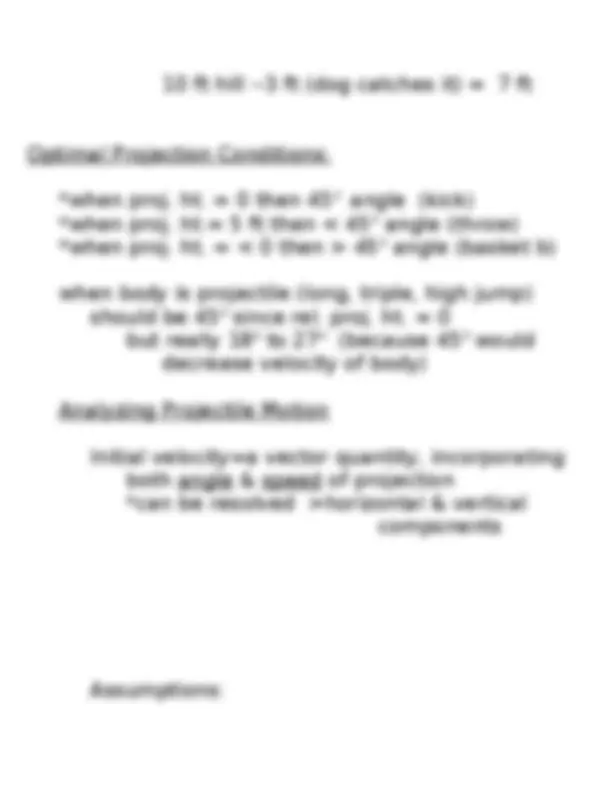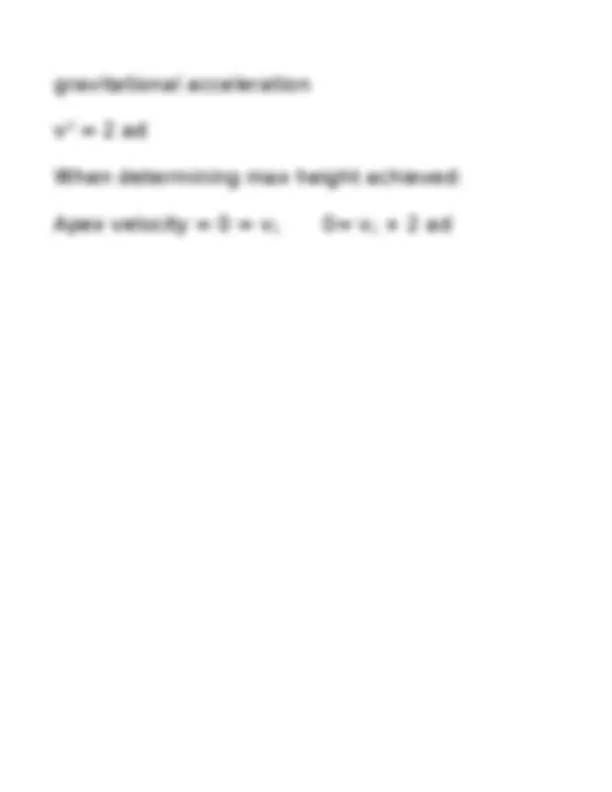






Study with the several resources on Docsity

Earn points by helping other students or get them with a premium plan


Prepare for your exams
Study with the several resources on Docsity

Earn points to download
Earn points by helping other students or get them with a premium plan
Community
Ask the community for help and clear up your study doubts
Discover the best universities in your country according to Docsity users
Free resources
Download our free guides on studying techniques, anxiety management strategies, and thesis advice from Docsity tutors
Material Type: Exam; Class: Kinesiology; Subject: Physical Education; University: Western Carolina University; Term: Unknown 1989;
Typology: Exams
1 / 8

This page cannot be seen from the preview
Don't miss anything!





Appearance of motion form, pattern, sequencing of movement over time Kinematic Analysis of performance: *motor learning of new skill *rehab of injuried joint Qualitative (visual observation) Joint action Timing of movement Proper limb placement Quantitative (numerical measurement) Joint ROM distance time height Motor Development & Adapted PE Distance =? Displacement *scalar quantity vector quantity *measured along change in location the path point A point B *length length & direction Speed and Velocity Velocity (linear) : rate of change in motion Speed= Velocity= length (distance) displacement (pt. B-pt. A) change in time change in time
*displacement & velocity: vector equivalents to distance & speed Running speed=stride length x stride frequency Balance & stride length Runner’s stride length Factors effecting: Height Muscle fiber composition Footwear Fatigue Injury history % grade of surface Overstriding= ^ risk of hamstring strain Acceleration Speeding up or down Linear acceleration=rate of change in linear velocity a = change in v (v 2 – v 1 ) change in time Sprinter out of the blocks: Leaving v=3m/s, and 5m/s one second later What is sprinter’s acceleration? *best sprinter ^^^ stride frequency
"apex" = highest point in trajectory vertical velocity= 0 Factors Influencing Projectile Motion: Flight time (velocity & height) Horizontal displacement (velocity & ht.) Vertical displacement (vert. veloc & ht.) Trajectory (speed,angle,height) Factors influencing projectile trajectory
horizontal speed x flight time
10 ft hill --3 ft (dog catches it) = 7 ft Optimal Projection Conditions: *when proj. ht. = 0 then 45 o angle (kick) *when proj. ht.= 5 ft then < 45 o angle (throw) *when proj. ht. = < 0 then > 45 o angle (basket b) when body is projectile (long, triple, high jump) should be 45 o since rel. proj. ht. = 0 but really 18 o to 27 o (because 45 o would decrease velocity of body) Analyzing Projectile Motion Initial velocity=a vector quantity, incorporating both angle & speed of projection *can be resolved >horizontal & vertical components Assumptions:
constant #2--horizontal displacement is = horizontal velocity x time Constant acceleration relationships: When applied to vertical component of Projectile motion, acceleration is = -9.81m/s 2 can't be ignored or deleated ( = 0). However, v 1 = 0 when object is dropped so V 2 = at Vertical displacement d = (1/2) at 2 Object's vertical displacement, velocity &
gravitational acceleration v 2 = 2 ad When determining max height achieved: Apex velocity = 0 = v 1 0= v 1 + 2 ad